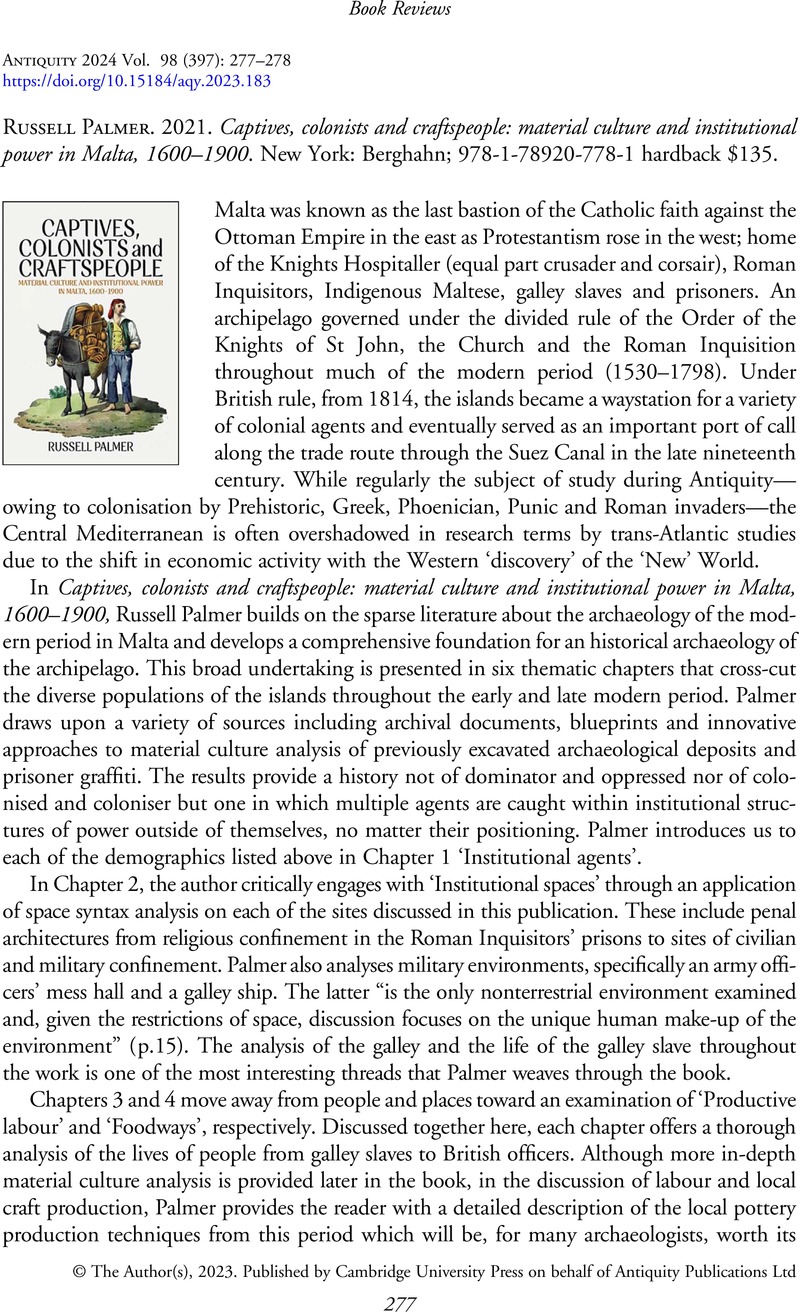No CrossRef data available.
Article contents
Russell Palmer. 2021. Captives, colonists and craftspeople: material culture and institutional power in Malta, 1600–1900. New York: Berghahn; 978-1-78920-778-1 hardback $135.
Review products
Russell Palmer. 2021. Captives, colonists and craftspeople: material culture and institutional power in Malta, 1600–1900. New York: Berghahn; 978-1-78920-778-1 hardback $135.
Published online by Cambridge University Press: 18 December 2023
Abstract
An abstract is not available for this content so a preview has been provided. Please use the Get access link above for information on how to access this content.

- Type
- Book Reviews
- Information
- Copyright
- Copyright © The Author(s), 2023. Published by Cambridge University Press on behalf of Antiquity Publications Ltd
References
Orser, C.E. Jr. 1996. A historical archaeology of the Modern World. New York: Springer.CrossRefGoogle Scholar


